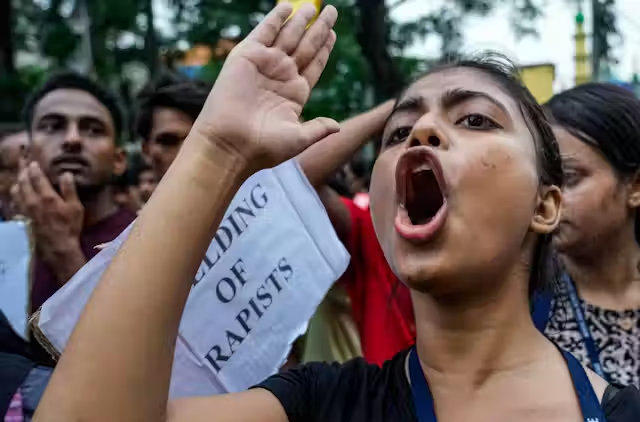In the week ending August 23, 2024, a series of deeply troubling rape incidents were reported in India, underscoring the ongoing crisis of sexual violence against women and girls in the country. These cases not only highlight the widespread nature of such crimes but also expose the systemic issues that continue to hinder the safety and protection of women.
Notable Cases of the Week
- Kolkata Doctor Rape-Murder Case (August 9, 2024): One of the most shocking incidents involved the rape and murder of a 31-year-old trainee doctor at RG Kar Medical College and Hospital in Kolkata. This crime has drawn significant public outrage, leading to widespread protests, including from the medical community across India. A civic volunteer at the hospital was arrested, and the case has been escalated to the Central Bureau of Investigation (CBI) due to its severe nature and public pressure. This incident has sparked intense debate about the safety of women, even in professional environments such as hospitals
- Rajasthan Rape Case (August 18, 2024): Another heinous crime was reported from Rajasthan, where a minor girl was raped in a rural area. The crime, committed by a known acquaintance, highlights the pervasive nature of sexual violence in rural India and the vulnerabilities of young girls. Such cases often go unreported due to social stigma and fear of retribution
- Incident in Delhi (August 21, 2024): In the national capital, a woman was sexually assaulted by her neighbor in her own home. This case emphasizes the dangers women face even in what should be the safest of spaces—their own homes. The perpetrator’s familiarity with the victim’s routine allowed him to exploit her trust, a common pattern in many rape cases.
- Maharashtra Assault (August 20, 2024): A young woman in Maharashtra was gang-raped by a group of men while returning from a social gathering. This incident, occurring in a semi-urban area, has raised concerns about the safety of women traveling alone, especially at night. The victim’s identity was exploited, and the assailants used their power to intimidate her.
Data and Analysis
The recent incidents are part of a broader trend of rising sexual violence against women in India. According to the National Crime Records Bureau (NCRB), India recorded an average of 86 rape cases per day in 2022. Although there was a slight decrease from 87 daily cases in 2021, the numbers remain alarmingly high compared to previous years. States like Rajasthan, Madhya Pradesh, and Uttar Pradesh consistently report high numbers of rape cases, with Rajasthan leading at 5,399 reported cases in 2022.
The brutality and frequency of these crimes have increased, despite legal reforms and heightened public awareness following high-profile cases such as the 2012 Delhi gang rape. The legal and social frameworks still fall short in providing adequate protection and justice for victims. The underutilization of funds intended for women’s safety, such as the Nirbhaya Fund, further exacerbates the issue. As of the end of 2023, only about 70% of the allocated Rs 7,213 crore had been utilized, indicating a significant gap in the deployment of resources aimed at protecting women.
Implications and Dangers to Women and Girls
The incidents reported in the past week illustrate the severe and ongoing danger to women and girls in India. These cases highlight several critical issues:
- Vulnerability in Professional and Private Spaces: The rape-murder of a doctor in a hospital and the assault on a woman in her own home show that no space is safe. Women are vulnerable not only in public areas but also in professional and private settings, where they should feel secure.
- Systemic Failures: The delayed response, lack of swift justice, and inadequate utilization of safety funds point to systemic failures in addressing sexual violence. These failures discourage reporting and contribute to a culture of impunity.
- Social and Cultural Barriers: Fear of social stigma, victim-blaming, and a lack of trust in law enforcement prevent many victims from reporting rape. This results in underreporting, which conceals the true scale of the problem.
- Need for Comprehensive Safety Measures: The current measures are insufficient. There is a need for comprehensive strategies, including better law enforcement, public awareness campaigns, education on gender equality, and improved safety infrastructure.
In conclusion, the recent spike in reported rape cases in India reflects deep-rooted societal issues that demand immediate and sustained action. Protecting women and girls from sexual violence requires a multifaceted approach, involving government, law enforcement, and civil society, to ensure safety, justice, and equality for all.





